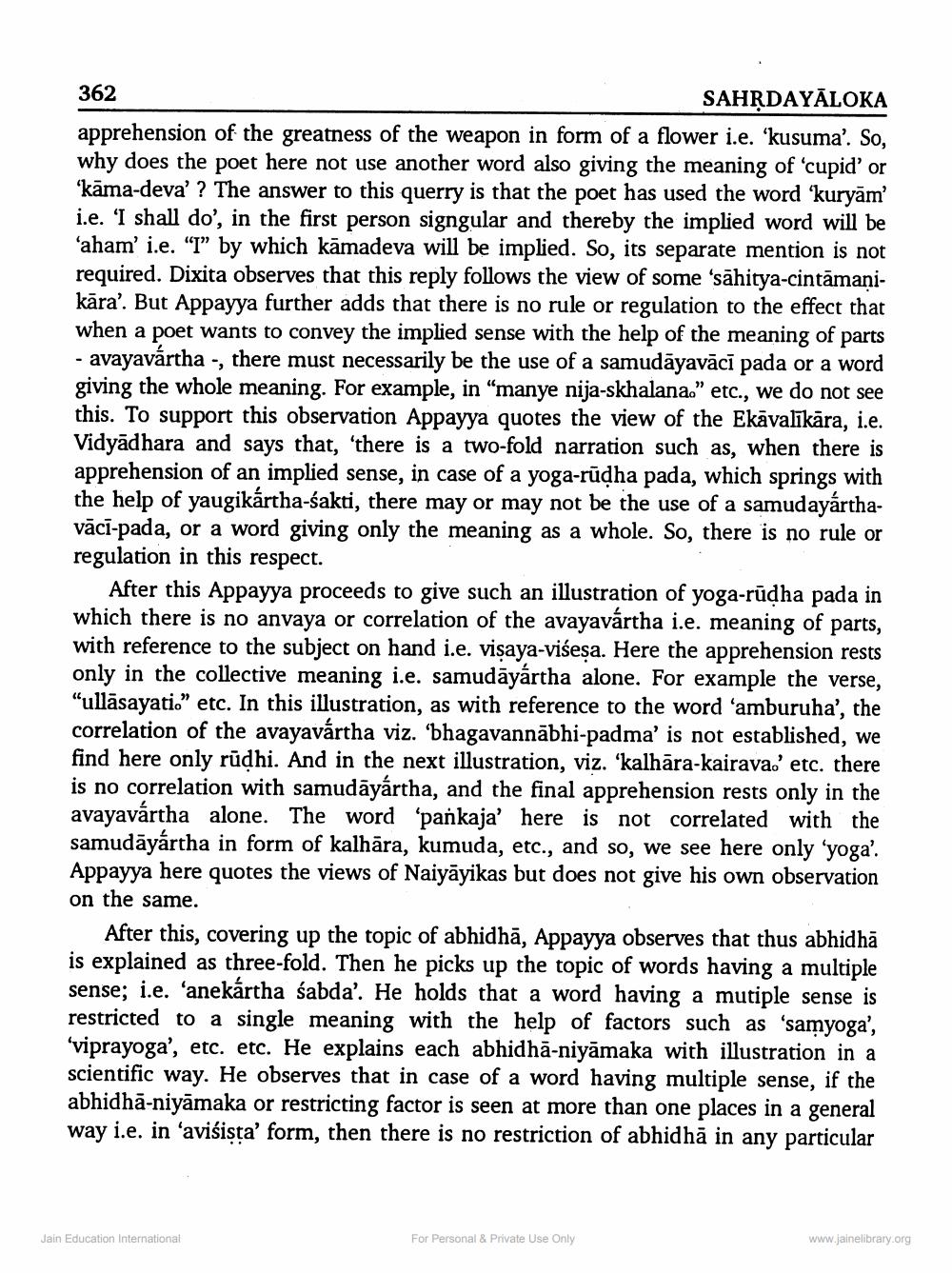________________
362
SAHRDAYĀLOKA apprehension of the greatness of the weapon in form of a flower i.e. ‘kusuma'. So, why does the poet here not use another word also giving the meaning of 'cupid' or ‘kāma-deva'? The answer to this querry is that the poet has used the word 'kuryām’ i.e. 'I shall do', in the first person signgular and thereby the implied word will be ‘aham' i.e. “I” by which kāmadeva will be implied. So, its separate mention is not required. Dixita observes that this reply follows the view of some 'sāhitya-cintāmanikāra'. But Appayya further adds that there is no rule or regulation to the effect that when a poet wants to convey the implied sense with the help of the meaning of parts - avayavártha -, there must necessarily be the use of a samudāyavācī pada or a word giving the whole meaning. For example, in “manye nija-skhalana." etc., we do not see this. To support this observation Appayya quotes the view of the Ekāvalīkāra, i.e. Vidyadhara and says that, 'there is a two-fold narration such as, when there is apprehension of an implied sense, in case of a yoga-rūdha pada, which springs with the help of yaugikártha-sakti, there may or may not be the use of a samudayárthavācī-pada, or a word giving only the meaning as a whole. So, there is no rule or regulation in this respect.
After this Appayya proceeds to give such an illustration of yoga-rūdha pada in which there is no anvaya or correlation of the avayavártha i.e. meaning of parts, with reference to the subject on hand i.e. visaya-višesa. Here the apprehension rests only in the collective meaning i.e. samudāyártha alone. For example the verse, "ullāsayati.” etc. In this illustration, as with reference to the word 'amburuha', the correlation of the avayavártha viz. 'bhagavannābhi-padma' is not established, we find here only rūdhi. And in the next illustration, viz. 'kalhāra-kairava.' etc. there is no correlation with samudāyártha, and the final apprehension rests only in the avayavártha alone. The word 'pankaja' here is not correlated with the samudāyártha in form of kalhāra, kumuda, etc., and so, we see here only 'yoga'. Appayya here quotes the views of Naiyāyikas but does not give his own observation on the same.
After this, covering up the topic of abhidhā, Appayya observes that thus abhidhā is explained as three-fold. Then he picks up the topic of words having a multiple sense; i.e. 'anekártha sabda'. He holds that a word having a mutiple sense is restricted to a single meaning with the help of factors such as 'samyoga', 'viprayoga', etc. etc. He explains each abhidhā-niyāmaka with illustration in a scientific way. He observes that in case of a word having multiple sense, if the abhidhā-niyāmaka or restricting factor is seen at more than one places in a general way i.e. in ‘aviśista' form, then there is no restriction of abhidhã in any particular
Jain Education International
For Personal & Private Use Only
www.jainelibrary.org




